
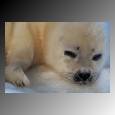


 Double Click On picture in Cube to go to Seashepherd Org,Seals&How They Live,Boycott Zone,Cetacean Society International,Help Save The Sea life
Double Click On picture in Cube to go to Seashepherd Org,Seals&How They Live,Boycott Zone,Cetacean Society International,Help Save The Sea life

 PCB residues still high in Puget Sound seals
Associated Press -
Harbor seals are giving scientists a long-term look at the level of chemical
contamination in Washington's inland waters.
Blood tests on the seals indicate pollution has dropped since the 1970s,
when the program began. But they also indicate that contamination remains.
"The seals aren't telling us where the problems are, but they can tell us a
good long-term story of how things have changed over time," said Scott
Redman, science coordinator for the Puget Sound Water Quality Action Team.
"If we pay attention to which factors are in the environment and causing
harm, we can have success in improving things."
Last week, nine researchers, mostly from the state Department of Fish and
Wildlife, used a net strung between two boats to snag 17 harbor seals at
Gertrude Island -- a speck of land by McNeil Island, west of Tacoma.
The effort was part of the Puget Sound Ambient Monitoring Program, in which
the state sends researchers to Hood Canal and Gertrude Island to examine
seal habits and habitat. About 17,000 harbor seals live in Puget Sound.
Researchers have examined seals at Gertrude Island since the 1970s.
At first, blood tests showed the animals had levels of cancer-causing PCBs
several times that considered damaging.
Today, PCB levels in Gertrude Island seals have declined significantly, but
are still relatively high. Seals monitored in Canada's Strait of Georgia
show PCB levels one-third to one-fourth as high as those in the south Puget
Sound area.
PCB residues still high in Puget Sound seals
Associated Press -
Harbor seals are giving scientists a long-term look at the level of chemical
contamination in Washington's inland waters.
Blood tests on the seals indicate pollution has dropped since the 1970s,
when the program began. But they also indicate that contamination remains.
"The seals aren't telling us where the problems are, but they can tell us a
good long-term story of how things have changed over time," said Scott
Redman, science coordinator for the Puget Sound Water Quality Action Team.
"If we pay attention to which factors are in the environment and causing
harm, we can have success in improving things."
Last week, nine researchers, mostly from the state Department of Fish and
Wildlife, used a net strung between two boats to snag 17 harbor seals at
Gertrude Island -- a speck of land by McNeil Island, west of Tacoma.
The effort was part of the Puget Sound Ambient Monitoring Program, in which
the state sends researchers to Hood Canal and Gertrude Island to examine
seal habits and habitat. About 17,000 harbor seals live in Puget Sound.
Researchers have examined seals at Gertrude Island since the 1970s.
At first, blood tests showed the animals had levels of cancer-causing PCBs
several times that considered damaging.
Today, PCB levels in Gertrude Island seals have declined significantly, but
are still relatively high. Seals monitored in Canada's Strait of Georgia
show PCB levels one-third to one-fourth as high as those in the south Puget
Sound area.
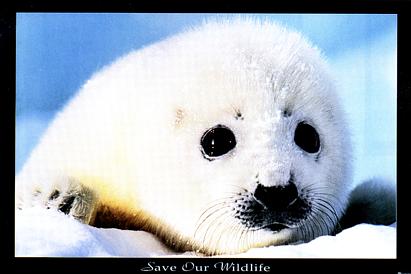 PCBs, or polychlorinated biphenyls, are industrial byproducts that have been
restricted since the mid-1970s. The chemicals can last years in sediments
and accumulate in the food chain, starting with tiny organisms, building up
in fish, and reaching the highest levels in eagles, seals and other
predators.
High levels of PCBs have been measured in Tacoma's Commencement Bay, though
it's not certain they are responsible for contamination in the Gertrude
Island seals, since the animals travel widely.
Scientists check the Gertrude Island seals each summer, right after pups are
born. Since PCBs are transferred to pups through their mothers' milk,
researchers take blubber samples from the pups to measure toxins and look
for evidence of diseases.
In addition to taking blood and blubber samples, the animals were weighed
and measured; their gender was verified; numbered tags were attached to
their flippers; they were branded with numbers; and they were given shots of
tetracycline -- a drug that stains the teeth to help identify the animals
after death
______________________________________________________________________
PCBs, or polychlorinated biphenyls, are industrial byproducts that have been
restricted since the mid-1970s. The chemicals can last years in sediments
and accumulate in the food chain, starting with tiny organisms, building up
in fish, and reaching the highest levels in eagles, seals and other
predators.
High levels of PCBs have been measured in Tacoma's Commencement Bay, though
it's not certain they are responsible for contamination in the Gertrude
Island seals, since the animals travel widely.
Scientists check the Gertrude Island seals each summer, right after pups are
born. Since PCBs are transferred to pups through their mothers' milk,
researchers take blubber samples from the pups to measure toxins and look
for evidence of diseases.
In addition to taking blood and blubber samples, the animals were weighed
and measured; their gender was verified; numbered tags were attached to
their flippers; they were branded with numbers; and they were given shots of
tetracycline -- a drug that stains the teeth to help identify the animals
after death
______________________________________________________________________
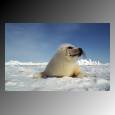
 Protest letter Canadian Seal Slaughter Anne 3:21 pm Friday June 4, 1999
To: [email protected], [email protected] Subject: Fwd: (CA)
Letter from Fisheries Minister re. seal hunt
To protest the Canadian (Atlantic) seal slaughter, emails may be sent to:
Honourable David Anderson
Minister, Fisheries and Oceans
[email protected]
Hon Pat. G. Binns
Premier, [email protected]
Tourism and Industry Association
[email protected]
~~~~~~~~~~~~~~~~~~~~~~~~~~~~~~~~~~~~~~~~~~~~~~~
This is the letter:
Honourable David Anderson
House of Commons
Minister, Fisheries and Oceans
Parliament Buildings, Wellington Street
Ottawa, ON K1A 0A6
Canada
Phone: 613 996 2538
Fax: 613 952 1458
E-mail: [email protected]
Protest letter Canadian Seal Slaughter Anne 3:21 pm Friday June 4, 1999
To: [email protected], [email protected] Subject: Fwd: (CA)
Letter from Fisheries Minister re. seal hunt
To protest the Canadian (Atlantic) seal slaughter, emails may be sent to:
Honourable David Anderson
Minister, Fisheries and Oceans
[email protected]
Hon Pat. G. Binns
Premier, [email protected]
Tourism and Industry Association
[email protected]
~~~~~~~~~~~~~~~~~~~~~~~~~~~~~~~~~~~~~~~~~~~~~~~
This is the letter:
Honourable David Anderson
House of Commons
Minister, Fisheries and Oceans
Parliament Buildings, Wellington Street
Ottawa, ON K1A 0A6
Canada
Phone: 613 996 2538
Fax: 613 952 1458
E-mail: [email protected]
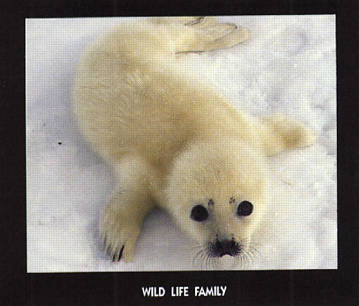 Dear Minister Anderson,
A few years ago I visited Prince Edward Island and Cape Breton Island, and
spent the rest of the vacation in other beautiful spots in Canada. I had
planned on returning soon.
However, hearing the appalling report of 285,000 seal pups to be slaughtered
for their pelts, I have vowed not to return. I had gotten other Americans
interested in visiting Canada, but have now been spreading the word about the
blood bath.
Years ago I was horrified by video coverage of seal pups being clubbed and
skinned alive in front of their shocked and bewildered mothers. I wrote
letters to the Canadian government about stopping the seal slaughter, and had
only visited Canada because of reports that the slaughter had stopped. Now I
hear this cruelty is happening in exactly the places I had visited! Dead,
mutilated seal pups are washing up onto these beautiful beaches.
The pups have sharp spiral cuts around their girths, some had their heads cut
off completely, some had bellies split right open, others had their skulls
exposed.
I am outraged by this cruelty.
I ask the government of Canada to use the power of its office to put a stop
to this horror. My tourist dollars will stay at home as long as it continues.
Sincerely,
~~~~~~~~~~~~~~~~~~~~
Dear Minister Anderson,
A few years ago I visited Prince Edward Island and Cape Breton Island, and
spent the rest of the vacation in other beautiful spots in Canada. I had
planned on returning soon.
However, hearing the appalling report of 285,000 seal pups to be slaughtered
for their pelts, I have vowed not to return. I had gotten other Americans
interested in visiting Canada, but have now been spreading the word about the
blood bath.
Years ago I was horrified by video coverage of seal pups being clubbed and
skinned alive in front of their shocked and bewildered mothers. I wrote
letters to the Canadian government about stopping the seal slaughter, and had
only visited Canada because of reports that the slaughter had stopped. Now I
hear this cruelty is happening in exactly the places I had visited! Dead,
mutilated seal pups are washing up onto these beautiful beaches.
The pups have sharp spiral cuts around their girths, some had their heads cut
off completely, some had bellies split right open, others had their skulls
exposed.
I am outraged by this cruelty.
I ask the government of Canada to use the power of its office to put a stop
to this horror. My tourist dollars will stay at home as long as it continues.
Sincerely,
~~~~~~~~~~~~~~~~~~~~
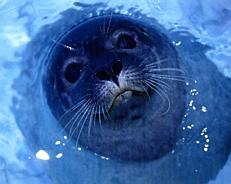 Canadian Sealing. On Apr. 12, 1999, Fisheries Minister David Anderson
announced that the Newfoundland seal quota would be maintained at 275,000
animals for the 1999 season. On Apr. 13-15, 1999, the Canadian House of
Commons Standing Committee on Fisheries and Oceans was scheduled to hold
hearings on issues relating to the East Coast seal hunt, including receipt
of a scientific report commissioned by the Newfoundland government
concluding that the seal herd is not threatened by the undetermined number
of seals that are killed each year but not retrieved nor recorded. The
Committee anticipates providing recommendations about the hunt to
Fisheries Minister David Anderson. On Apr. 14, 1999, the Canadian Sealers
Association urged Newfoundland's Fisheries Minister John Efford to curtail
his campaign to increase the seal harvest quota, fearing that the notion
of a cull could severely depress seal product prices and destroy the C$25
million sealing industry. On Apr. 20, 1999, Newfoundland provincial court
judge Robert Fowler rejected an edited copy of much-publicized videotape
collected by an animal protection group in a trial against 7 sealers
charged with illegal hunting. The judge criticized the photographer for
lying to obtain an observer's permit to view the hunt, and the animal
protection group for loose evidentiary handling. The trial was adjourned
until May 5, 1999. [Canadian Press]
HI Diesel Spill. On Apr. 10, 1999, a commercial fishing vessel grounded
on a reef of Kauai's east coast. On Apr. 13, 1999, this vessel broke up,
spilling about 16,000 gallons of diesel fuel into waters inhabited by monk
seals and green sea turtles. [Assoc Press]
Canadian Marine Mammal Capture Policy. In early April 1999, a marine
mammal scientist submitted a commissioned study for the Dept. of Fisheries
and Oceans on policy options regarding marine mammal captures. [National
Post]
Canadian Sealing. On Apr. 12, 1999, Fisheries Minister David Anderson
announced that the Newfoundland seal quota would be maintained at 275,000
animals for the 1999 season. On Apr. 13-15, 1999, the Canadian House of
Commons Standing Committee on Fisheries and Oceans was scheduled to hold
hearings on issues relating to the East Coast seal hunt, including receipt
of a scientific report commissioned by the Newfoundland government
concluding that the seal herd is not threatened by the undetermined number
of seals that are killed each year but not retrieved nor recorded. The
Committee anticipates providing recommendations about the hunt to
Fisheries Minister David Anderson. On Apr. 14, 1999, the Canadian Sealers
Association urged Newfoundland's Fisheries Minister John Efford to curtail
his campaign to increase the seal harvest quota, fearing that the notion
of a cull could severely depress seal product prices and destroy the C$25
million sealing industry. On Apr. 20, 1999, Newfoundland provincial court
judge Robert Fowler rejected an edited copy of much-publicized videotape
collected by an animal protection group in a trial against 7 sealers
charged with illegal hunting. The judge criticized the photographer for
lying to obtain an observer's permit to view the hunt, and the animal
protection group for loose evidentiary handling. The trial was adjourned
until May 5, 1999. [Canadian Press]
HI Diesel Spill. On Apr. 10, 1999, a commercial fishing vessel grounded
on a reef of Kauai's east coast. On Apr. 13, 1999, this vessel broke up,
spilling about 16,000 gallons of diesel fuel into waters inhabited by monk
seals and green sea turtles. [Assoc Press]
Canadian Marine Mammal Capture Policy. In early April 1999, a marine
mammal scientist submitted a commissioned study for the Dept. of Fisheries
and Oceans on policy options regarding marine mammal captures. [National
Post]
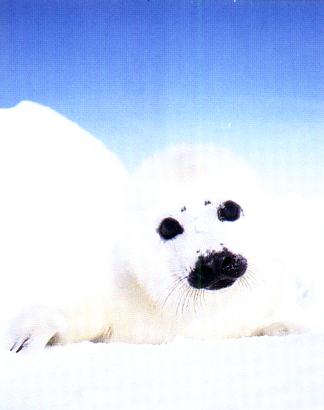 Seal Sanctuary Appeal. In early April 1999, a government appeals
committee found in favor of residents of Islay, Scotland, who had filed an
appeal of a proposed site of special scientific interest for designation
by Scottish Natural Heritage to protect around 600 common seals in on a
maze of rocky islets ? the South East Islay Skerries. Local fishermen
were concerned that the site designation and protection for seals would
harm commercial fishing interests. This was the first successful appeal
of a site designation since 1991. [Daily Telegraph]
Seal Sanctuary Appeal. In early April 1999, a government appeals
committee found in favor of residents of Islay, Scotland, who had filed an
appeal of a proposed site of special scientific interest for designation
by Scottish Natural Heritage to protect around 600 common seals in on a
maze of rocky islets ? the South East Islay Skerries. Local fishermen
were concerned that the site designation and protection for seals would
harm commercial fishing interests. This was the first successful appeal
of a site designation since 1991. [Daily Telegraph]

 Enter the world of whaling!
Enter the world of whaling!



 Double Click On picture in Cube to go to Seashepherd Org,Seals&How They Live,Boycott Zone,Cetacean Society International,Help Save The Sea life
Double Click On picture in Cube to go to Seashepherd Org,Seals&How They Live,Boycott Zone,Cetacean Society International,Help Save The Sea life

 PCB residues still high in Puget Sound seals
Associated Press -
Harbor seals are giving scientists a long-term look at the level of chemical
contamination in Washington's inland waters.
Blood tests on the seals indicate pollution has dropped since the 1970s,
when the program began. But they also indicate that contamination remains.
"The seals aren't telling us where the problems are, but they can tell us a
good long-term story of how things have changed over time," said Scott
Redman, science coordinator for the Puget Sound Water Quality Action Team.
"If we pay attention to which factors are in the environment and causing
harm, we can have success in improving things."
Last week, nine researchers, mostly from the state Department of Fish and
Wildlife, used a net strung between two boats to snag 17 harbor seals at
Gertrude Island -- a speck of land by McNeil Island, west of Tacoma.
The effort was part of the Puget Sound Ambient Monitoring Program, in which
the state sends researchers to Hood Canal and Gertrude Island to examine
seal habits and habitat. About 17,000 harbor seals live in Puget Sound.
Researchers have examined seals at Gertrude Island since the 1970s.
At first, blood tests showed the animals had levels of cancer-causing PCBs
several times that considered damaging.
Today, PCB levels in Gertrude Island seals have declined significantly, but
are still relatively high. Seals monitored in Canada's Strait of Georgia
show PCB levels one-third to one-fourth as high as those in the south Puget
Sound area.
PCB residues still high in Puget Sound seals
Associated Press -
Harbor seals are giving scientists a long-term look at the level of chemical
contamination in Washington's inland waters.
Blood tests on the seals indicate pollution has dropped since the 1970s,
when the program began. But they also indicate that contamination remains.
"The seals aren't telling us where the problems are, but they can tell us a
good long-term story of how things have changed over time," said Scott
Redman, science coordinator for the Puget Sound Water Quality Action Team.
"If we pay attention to which factors are in the environment and causing
harm, we can have success in improving things."
Last week, nine researchers, mostly from the state Department of Fish and
Wildlife, used a net strung between two boats to snag 17 harbor seals at
Gertrude Island -- a speck of land by McNeil Island, west of Tacoma.
The effort was part of the Puget Sound Ambient Monitoring Program, in which
the state sends researchers to Hood Canal and Gertrude Island to examine
seal habits and habitat. About 17,000 harbor seals live in Puget Sound.
Researchers have examined seals at Gertrude Island since the 1970s.
At first, blood tests showed the animals had levels of cancer-causing PCBs
several times that considered damaging.
Today, PCB levels in Gertrude Island seals have declined significantly, but
are still relatively high. Seals monitored in Canada's Strait of Georgia
show PCB levels one-third to one-fourth as high as those in the south Puget
Sound area.
 PCBs, or polychlorinated biphenyls, are industrial byproducts that have been
restricted since the mid-1970s. The chemicals can last years in sediments
and accumulate in the food chain, starting with tiny organisms, building up
in fish, and reaching the highest levels in eagles, seals and other
predators.
High levels of PCBs have been measured in Tacoma's Commencement Bay, though
it's not certain they are responsible for contamination in the Gertrude
Island seals, since the animals travel widely.
Scientists check the Gertrude Island seals each summer, right after pups are
born. Since PCBs are transferred to pups through their mothers' milk,
researchers take blubber samples from the pups to measure toxins and look
for evidence of diseases.
In addition to taking blood and blubber samples, the animals were weighed
and measured; their gender was verified; numbered tags were attached to
their flippers; they were branded with numbers; and they were given shots of
tetracycline -- a drug that stains the teeth to help identify the animals
after death
______________________________________________________________________
PCBs, or polychlorinated biphenyls, are industrial byproducts that have been
restricted since the mid-1970s. The chemicals can last years in sediments
and accumulate in the food chain, starting with tiny organisms, building up
in fish, and reaching the highest levels in eagles, seals and other
predators.
High levels of PCBs have been measured in Tacoma's Commencement Bay, though
it's not certain they are responsible for contamination in the Gertrude
Island seals, since the animals travel widely.
Scientists check the Gertrude Island seals each summer, right after pups are
born. Since PCBs are transferred to pups through their mothers' milk,
researchers take blubber samples from the pups to measure toxins and look
for evidence of diseases.
In addition to taking blood and blubber samples, the animals were weighed
and measured; their gender was verified; numbered tags were attached to
their flippers; they were branded with numbers; and they were given shots of
tetracycline -- a drug that stains the teeth to help identify the animals
after death
______________________________________________________________________

 Protest letter Canadian Seal Slaughter Anne 3:21 pm Friday June 4, 1999
To: [email protected], [email protected] Subject: Fwd: (CA)
Letter from Fisheries Minister re. seal hunt
To protest the Canadian (Atlantic) seal slaughter, emails may be sent to:
Honourable David Anderson
Minister, Fisheries and Oceans
[email protected]
Hon Pat. G. Binns
Premier, [email protected]
Tourism and Industry Association
[email protected]
~~~~~~~~~~~~~~~~~~~~~~~~~~~~~~~~~~~~~~~~~~~~~~~
This is the letter:
Honourable David Anderson
House of Commons
Minister, Fisheries and Oceans
Parliament Buildings, Wellington Street
Ottawa, ON K1A 0A6
Canada
Phone: 613 996 2538
Fax: 613 952 1458
E-mail: [email protected]
Protest letter Canadian Seal Slaughter Anne 3:21 pm Friday June 4, 1999
To: [email protected], [email protected] Subject: Fwd: (CA)
Letter from Fisheries Minister re. seal hunt
To protest the Canadian (Atlantic) seal slaughter, emails may be sent to:
Honourable David Anderson
Minister, Fisheries and Oceans
[email protected]
Hon Pat. G. Binns
Premier, [email protected]
Tourism and Industry Association
[email protected]
~~~~~~~~~~~~~~~~~~~~~~~~~~~~~~~~~~~~~~~~~~~~~~~
This is the letter:
Honourable David Anderson
House of Commons
Minister, Fisheries and Oceans
Parliament Buildings, Wellington Street
Ottawa, ON K1A 0A6
Canada
Phone: 613 996 2538
Fax: 613 952 1458
E-mail: [email protected]
 Dear Minister Anderson,
A few years ago I visited Prince Edward Island and Cape Breton Island, and
spent the rest of the vacation in other beautiful spots in Canada. I had
planned on returning soon.
However, hearing the appalling report of 285,000 seal pups to be slaughtered
for their pelts, I have vowed not to return. I had gotten other Americans
interested in visiting Canada, but have now been spreading the word about the
blood bath.
Years ago I was horrified by video coverage of seal pups being clubbed and
skinned alive in front of their shocked and bewildered mothers. I wrote
letters to the Canadian government about stopping the seal slaughter, and had
only visited Canada because of reports that the slaughter had stopped. Now I
hear this cruelty is happening in exactly the places I had visited! Dead,
mutilated seal pups are washing up onto these beautiful beaches.
The pups have sharp spiral cuts around their girths, some had their heads cut
off completely, some had bellies split right open, others had their skulls
exposed.
I am outraged by this cruelty.
I ask the government of Canada to use the power of its office to put a stop
to this horror. My tourist dollars will stay at home as long as it continues.
Sincerely,
~~~~~~~~~~~~~~~~~~~~
Dear Minister Anderson,
A few years ago I visited Prince Edward Island and Cape Breton Island, and
spent the rest of the vacation in other beautiful spots in Canada. I had
planned on returning soon.
However, hearing the appalling report of 285,000 seal pups to be slaughtered
for their pelts, I have vowed not to return. I had gotten other Americans
interested in visiting Canada, but have now been spreading the word about the
blood bath.
Years ago I was horrified by video coverage of seal pups being clubbed and
skinned alive in front of their shocked and bewildered mothers. I wrote
letters to the Canadian government about stopping the seal slaughter, and had
only visited Canada because of reports that the slaughter had stopped. Now I
hear this cruelty is happening in exactly the places I had visited! Dead,
mutilated seal pups are washing up onto these beautiful beaches.
The pups have sharp spiral cuts around their girths, some had their heads cut
off completely, some had bellies split right open, others had their skulls
exposed.
I am outraged by this cruelty.
I ask the government of Canada to use the power of its office to put a stop
to this horror. My tourist dollars will stay at home as long as it continues.
Sincerely,
~~~~~~~~~~~~~~~~~~~~
 Canadian Sealing. On Apr. 12, 1999, Fisheries Minister David Anderson
announced that the Newfoundland seal quota would be maintained at 275,000
animals for the 1999 season. On Apr. 13-15, 1999, the Canadian House of
Commons Standing Committee on Fisheries and Oceans was scheduled to hold
hearings on issues relating to the East Coast seal hunt, including receipt
of a scientific report commissioned by the Newfoundland government
concluding that the seal herd is not threatened by the undetermined number
of seals that are killed each year but not retrieved nor recorded. The
Committee anticipates providing recommendations about the hunt to
Fisheries Minister David Anderson. On Apr. 14, 1999, the Canadian Sealers
Association urged Newfoundland's Fisheries Minister John Efford to curtail
his campaign to increase the seal harvest quota, fearing that the notion
of a cull could severely depress seal product prices and destroy the C$25
million sealing industry. On Apr. 20, 1999, Newfoundland provincial court
judge Robert Fowler rejected an edited copy of much-publicized videotape
collected by an animal protection group in a trial against 7 sealers
charged with illegal hunting. The judge criticized the photographer for
lying to obtain an observer's permit to view the hunt, and the animal
protection group for loose evidentiary handling. The trial was adjourned
until May 5, 1999. [Canadian Press]
HI Diesel Spill. On Apr. 10, 1999, a commercial fishing vessel grounded
on a reef of Kauai's east coast. On Apr. 13, 1999, this vessel broke up,
spilling about 16,000 gallons of diesel fuel into waters inhabited by monk
seals and green sea turtles. [Assoc Press]
Canadian Marine Mammal Capture Policy. In early April 1999, a marine
mammal scientist submitted a commissioned study for the Dept. of Fisheries
and Oceans on policy options regarding marine mammal captures. [National
Post]
Canadian Sealing. On Apr. 12, 1999, Fisheries Minister David Anderson
announced that the Newfoundland seal quota would be maintained at 275,000
animals for the 1999 season. On Apr. 13-15, 1999, the Canadian House of
Commons Standing Committee on Fisheries and Oceans was scheduled to hold
hearings on issues relating to the East Coast seal hunt, including receipt
of a scientific report commissioned by the Newfoundland government
concluding that the seal herd is not threatened by the undetermined number
of seals that are killed each year but not retrieved nor recorded. The
Committee anticipates providing recommendations about the hunt to
Fisheries Minister David Anderson. On Apr. 14, 1999, the Canadian Sealers
Association urged Newfoundland's Fisheries Minister John Efford to curtail
his campaign to increase the seal harvest quota, fearing that the notion
of a cull could severely depress seal product prices and destroy the C$25
million sealing industry. On Apr. 20, 1999, Newfoundland provincial court
judge Robert Fowler rejected an edited copy of much-publicized videotape
collected by an animal protection group in a trial against 7 sealers
charged with illegal hunting. The judge criticized the photographer for
lying to obtain an observer's permit to view the hunt, and the animal
protection group for loose evidentiary handling. The trial was adjourned
until May 5, 1999. [Canadian Press]
HI Diesel Spill. On Apr. 10, 1999, a commercial fishing vessel grounded
on a reef of Kauai's east coast. On Apr. 13, 1999, this vessel broke up,
spilling about 16,000 gallons of diesel fuel into waters inhabited by monk
seals and green sea turtles. [Assoc Press]
Canadian Marine Mammal Capture Policy. In early April 1999, a marine
mammal scientist submitted a commissioned study for the Dept. of Fisheries
and Oceans on policy options regarding marine mammal captures. [National
Post]
 Seal Sanctuary Appeal. In early April 1999, a government appeals
committee found in favor of residents of Islay, Scotland, who had filed an
appeal of a proposed site of special scientific interest for designation
by Scottish Natural Heritage to protect around 600 common seals in on a
maze of rocky islets ? the South East Islay Skerries. Local fishermen
were concerned that the site designation and protection for seals would
harm commercial fishing interests. This was the first successful appeal
of a site designation since 1991. [Daily Telegraph]
Seal Sanctuary Appeal. In early April 1999, a government appeals
committee found in favor of residents of Islay, Scotland, who had filed an
appeal of a proposed site of special scientific interest for designation
by Scottish Natural Heritage to protect around 600 common seals in on a
maze of rocky islets ? the South East Islay Skerries. Local fishermen
were concerned that the site designation and protection for seals would
harm commercial fishing interests. This was the first successful appeal
of a site designation since 1991. [Daily Telegraph]
 Enter the world of whaling!
Enter the world of whaling!